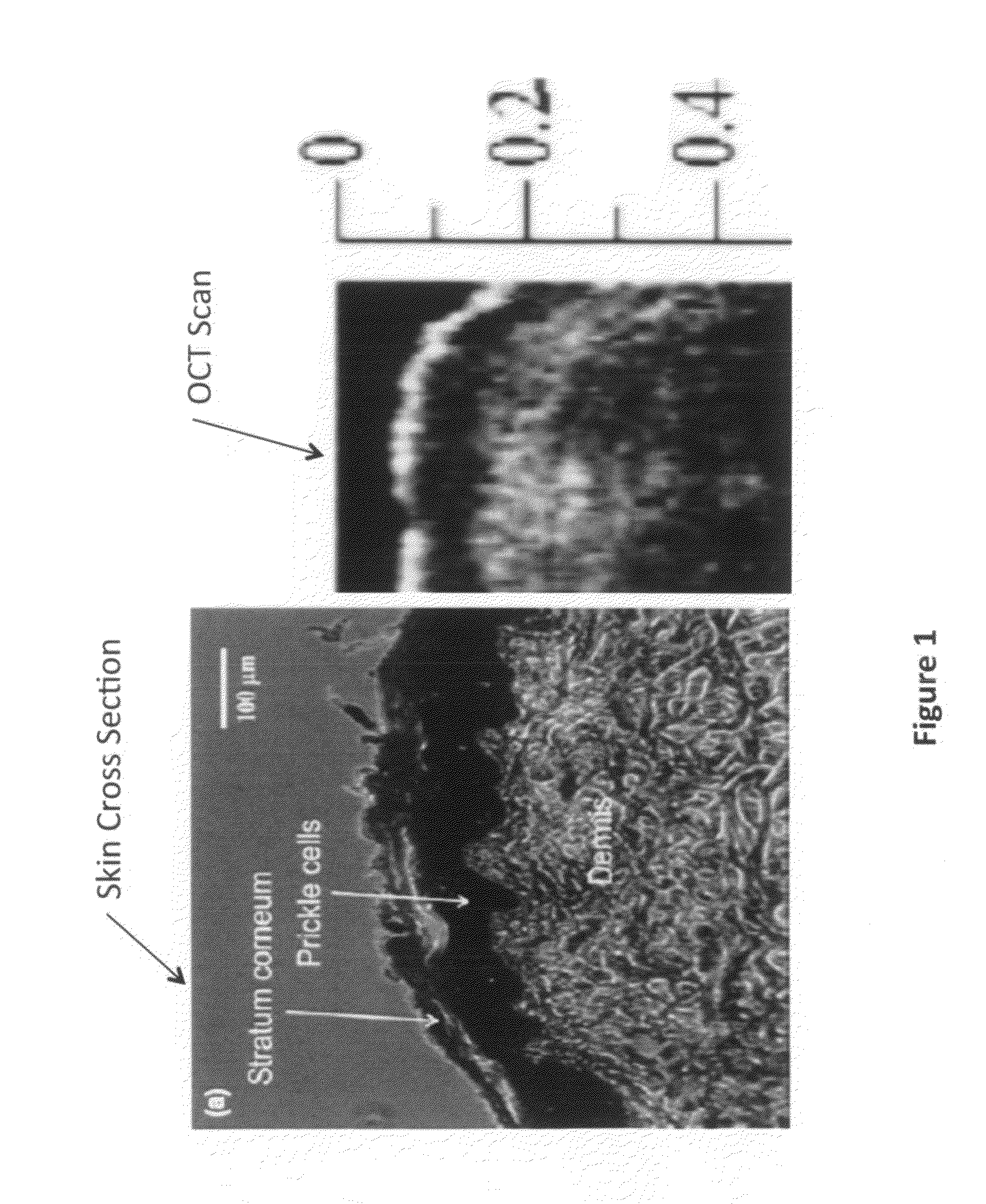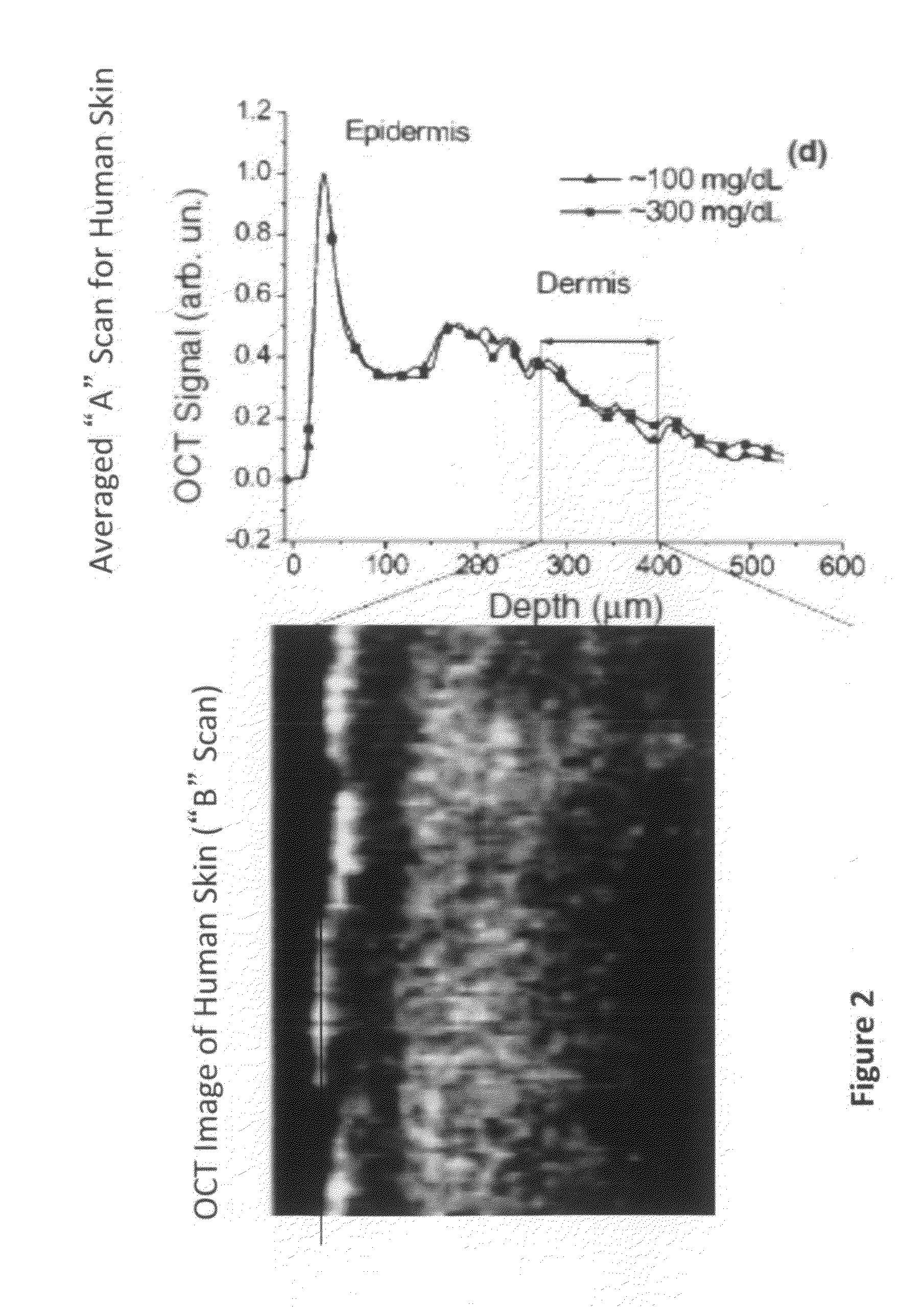Hyaluronic acid based glucose monitoring
a technology of hyaluronic acid and glucose monitoring, applied in the field of interferometric techniques, can solve the problems of not being able to associate scans obtained by oct to meaningful, and the difficulty of quickly and accurately using o
- Summary
- Abstract
- Description
- Claims
- Application Information
AI Technical Summary
Problems solved by technology
Method used
Image
Examples
Embodiment Construction
[0020]The method according to the preferred embodiment employs OCT System scan data of tissue targets as depicted in FIG. 1. FIG. 1 depicts generalized OCT system elements, a tissue target, and an OCT scan with scan portions interpreted as corresponding to skin structures marked. OCT is well known, and the illustration is provided as an aid to the reader to visualize how the depth information obtained from the OCT appears in a scan of the target The depicted OCT system elements are a broadband light source 101, a beam splitter 103, a reference mirror 105 and a detector 107. Light from the source that penetrates the target 109, passing from the skin surface 111, to some depth in the target, scattering, and from which light scattered within the target, a portion will be reflected back to the beam splitter 103, and then to the detector 107.
[0021]As can be seen by referring to the OCT scan 113 of the target 109, characteristics of the scan 113 can be attributed to depth characteristics ...
PUM
 Login to View More
Login to View More Abstract
Description
Claims
Application Information
 Login to View More
Login to View More - R&D
- Intellectual Property
- Life Sciences
- Materials
- Tech Scout
- Unparalleled Data Quality
- Higher Quality Content
- 60% Fewer Hallucinations
Browse by: Latest US Patents, China's latest patents, Technical Efficacy Thesaurus, Application Domain, Technology Topic, Popular Technical Reports.
© 2025 PatSnap. All rights reserved.Legal|Privacy policy|Modern Slavery Act Transparency Statement|Sitemap|About US| Contact US: help@patsnap.com



